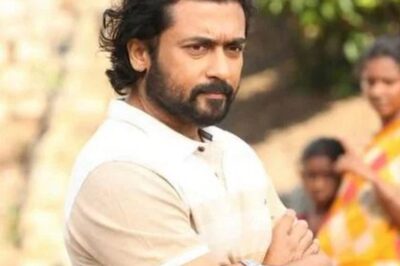
views
The French humanist photographer Henri Cartier-Bresson, who is often considered to be the master of candid photography and one of the early users of 35mm film, passed away on August 3, 2004 at the age of 95.
Born on August 22, 1908, in Chanteloup-en-Brie, Seine-et-Marne, France, he witnessed and documented - in his hand-held 35-millimeter Leica camera - some of the world's most defining moments and episodes, including the Spanish Civil War, the partition of India and the German occupation of France among others. Carietr-Bresson also pioneered the genre of street photography and most famously viewed photography as capturing a decisive moment.
On his 15th death anniversary, here's looking at a few interesting facts of the famed photographer.
-As a child, he was a proud owner of a Box Brownie, and would take snapshots during his school holidays.
-During his career, he documented portraits of Camus, Picasso, Colette, Matisse, Pound and Giacometti.
-He started his career in Africa, particularly the former French colony Côte d’Ivoire.
-In 1932, he placed his first photography work for exhibition in New York at the Julien Levy Gallery.
-In 1935, he again exhibited more of his work at the same gallery, along with fellow photographers Robert Capa and David Seymour.
-The Surrealist movement, founded in 1924, influenced the photographer a lot and Cartier-Bresson began socializing with the Surrealists at the Café Cyrano. He was drawn to the Surrealist movement's technique of using the subconscious and the immediate to influence their work.
-In 1929, Cartier-Bresson met American expatriate Harry Crosby at Le Bourget who presented Henri with his first camera.
-He acted in renowned French film director Jean Renoir's 1936 film Partie de Campagne and in the 1939 La Règle Du Jeu, for which he played a butler and served as second assistant.
-Cartier-Bresson's first photojournalist photos to be published came in 1937 when he covered the coronation of King George VI and Queen Elizabeth.
-Henri Cartier-Bresson tied the knot with a Javanese dancer Ratna Mohini in 1937. The couple divorced 30 years later. He then married Martine Franck and together they had a daughter namely Mélanie.
-In early 1947, Cartier-Bresson, with Robert Capa, David Seymour, William Vandivert and George Rodger founded the famed Magnum Photos.
-He was one of the last people to have met Mahatma Gandhi on January 30, 1948. According to reports, he had shown Gandhi a small catalogue of his one-man exhibition in New York and fifteen minutes after Cartier-Bresson left, Bapu was assassinated.
-Cartier-Bresson's method of using only available light, and editing "in the camera" influenced Satyajit Ray in making his Apu Trilogy.
-Cartier-Bresson retired from photography in the early 1970s, and by 1975 no longer took pictures other than an occasional private portrait.
-Instead, he returned to drawing and painting, holding his first exhibition of drawings at the Carlton Gallery in New York in 1975.
-Cartier-Bresson did not like being photographed, and when he accepted an honorary degree from Oxford University in 1975, he held a paper in front of his face to avoid being photographed.


















Comments
0 comment